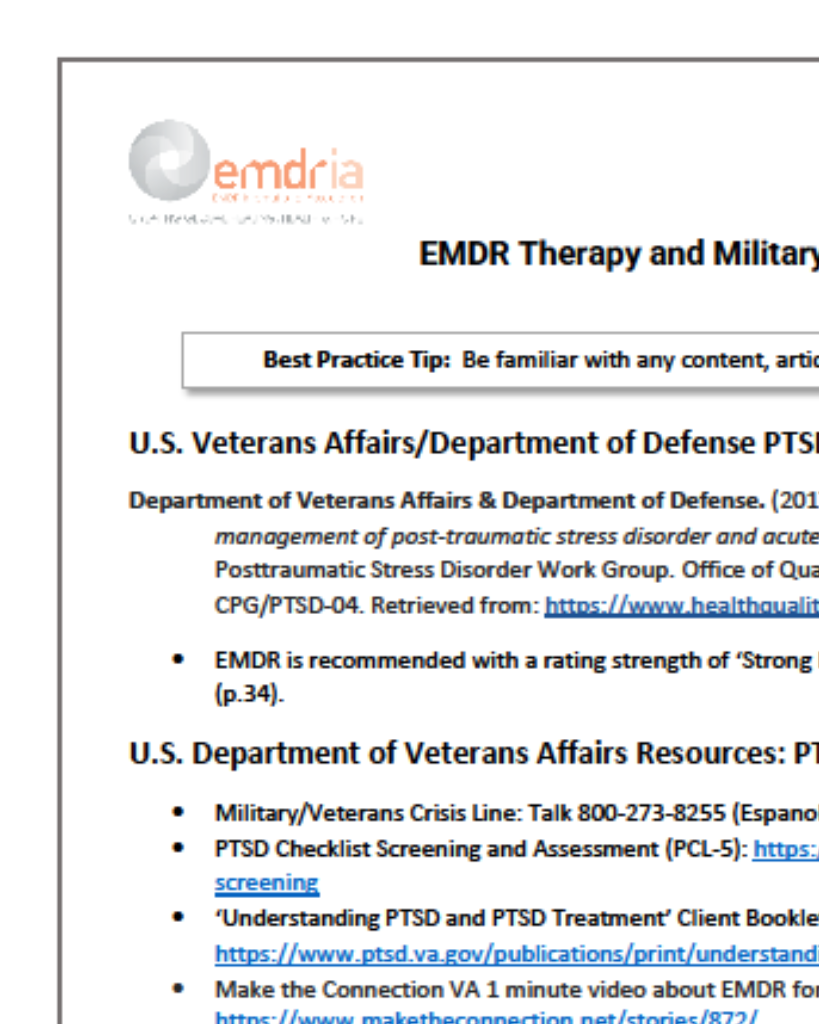Individual prediction of trauma-focused psychotherapy response in youth with posttraumatic stress disorder using resting-state functional connectivity
Study of biomarkers are available to assist clinicians in identifying youth with PTSD who are most likely to benefit from treatment.
Article Abstract
“Randomized controlled trials have shown efficacy of trauma-focused psychotherapies in youth with posttraumatic stress disorder (PTSD). However, response varies considerably among individuals. Currently, no biomarkers are available to assist clinicians in identifying youth who are most likely to benefit from treatment. In this study, we investigated whether resting-state functional magnetic resonance imaging (rs-fMRI) could distinguish between responders and non-responders on the group- and individual patient level. Pre-treatment rs-fMRI was recorded in 40 youth (ages 8–17 years) with (partial) PTSD before trauma-focused psychotherapy. Change in symptom severity from pre- to post-treatment was assessed using the Clinician-Administered PTSD scale for Children and Adolescents to divide participants into responders (≥30% symptom reduction) and non-responders. Functional networks were identified using meta-independent component analysis. Group-differences within- and between-network connectivity between responders and non-responders were tested using permutation testing. Individual predictions were made using multivariate, cross-validated support vector machine classification. A network centered on the bilateral superior temporal gyrus predicted treatment response for individual patients with 76% accuracy (pFWE = 0.02, 87% sensitivity, 65% specificity, area-under-receiver-operator-curve of 0.82). Functional connectivity between the frontoparietal and sensorimotor network was significantly stronger in non-responders (t = 5.35, pFWE = 0.01) on the group-level. Within-network connectivity was not significantly different between groups. This study provides proof-of-concept evidence for the feasibility to predict trauma-focused psychotherapy response in youth with PTSD at an individual-level. Future studies are required to test if larger cohorts could increase accuracy and to test further generalizability of the prediction models.”
—Description from publisher
Article Access
Open Access
Zhutovsky, P., Zantvoord, J. B., Ensink, J. B. M., Op den Kelder, R., Lindauer, R. J. L., & van Wingen, G. A. (2021). Individual prediction of trauma-focused psychotherapy response in youth with posttraumatic stress disorder using resting-state functional connectivity. NeuroImage: Clinical, 32, 102898. https://doi.org/10.1016/j.nicl.2021.102898
Date
November 26, 2021
Creator(s)
Paul Zhutovsky, Jasper B. Zantvoord, Judith B.M. Ensink
Contributor(s)
Rosanne op den Kelder, Ramon J.L. Lindauer, Guido A. van Wingen
Topics
PTSD
Client Population
Adolescents, Children
Practice & Methods
Mechanisms of Action, Neurobiology
Extent
10 pages
Publisher
Elsevier
Rights
© 2021 The Authors. Published by Elsevier Inc.
APA Citation
Zhutovsky, P., Zantvoord, J. B., Ensink, J. B. M., Op den Kelder, R., Lindauer, R. J. L., & van Wingen, G. A. (2021). Individual prediction of trauma-focused psychotherapy response in youth with posttraumatic stress disorder using resting-state functional connectivity. NeuroImage: Clinical, 32, 102898. https://doi.org/10.1016/j.nicl.2021.102898
Audience
EMDR Therapists, Other Mental Health Professionals
Language
English
Content Type
Article, Peer-Reviewed
Access Type
External Resource, Open Access
Related Resources




